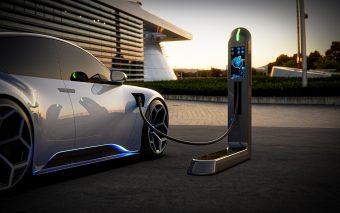Car manufacturers have clear pathways to meet their EU climate targets next year due to the expected rapid growth in electric car sales, new analysis shows. Electric cars (BEV) should reach between 20-24 percent market share in 2025, according to Transport & Environment (T&E) modelling based on sales in the first half of this year and sales forecasts.
Some manufacturers are calling on the EU to trigger a special crisis clause to delay their CO2 targets by two years, citing fears over sluggish EV sales. But T&E’s central scenario forecasts BEVs will contribute 60 percent, on average, of the CO2 reduction that carmakers still need to achieve for the EU emissions targets next year. This will be partly driven by seven new fully electric models under €25,000 which have arrived or are coming on the market in 2024 and 2025.

Lucien Mathieu, cars director at T&E, said: “2025 will be a great year for Europeans in the market for an electric car. BEVs should be almost a quarter of new cars sold thanks to a glut of new, more affordable models. But manufacturers’ reliance on hybrids, which are reaching the limits of their CO2 saving potential, is a short sighted strategy for the climate and competing with Chinese BEVs.”
While BEVs would make the greatest contribution, Stellantis and Volkswagen Group are also expected to rely on hybrids (HEVs) for 33 percent and 30 percent respectively of the CO2 reduction they still need to achieve the EU targets. That is according to the central scenario in T&E’s modelling, which is based on sales forecasts informed by market research company GlobalData. Hybrid sales should also close significant parts of the emissions gap for Mercedes-Benz (17 percent) and Renault (15 percent), it shows.
More:
- The corporate sector continues to lag behind private households for EV uptake
- How hybrid planes could make aviation more sustainable
- Croatia Invests 200 Million Euros in Electric Vehicle Chargers
On top of its fully electric models, BMW is expected to depend on plug-in hybrids to achieve 18 percent of the emissions cut it needs to meet the EU 2025 target, the central scenario shows. If manufacturers rely more heavily on selling hybrids to comply, overall BEV market share would be 20 percent next year, according to T&E’s high HEV scenario, compared to 24 percent in the central scenario. In all scenarios, Volvo Cars is already compliant thanks to high BEV sales.
If carmakers still struggle, they can ‘pool’ with other manufacturers to further cut their average emissions, according to the analysis. If VW pools with Tesla, only 17 percent of its sales would need to be BEVs in 2025 (instead of 22 percent). If Ford pools with Volvo, as it did in 2021, BEVs would need to account for just 9 percent of its sales instead of 21 percent.
In July, EU Commission president Ursula von der Leyen confirmed the bloc’s zero-emissions cars target will go ahead in 2035. Last week the German government rejected the car industry’s call to weaken the 2025 target. T&E is calling on EU and national lawmakers to do more to support EV demand with policies such as corporate fleet targets, charging masterplans and social leasing schemes.
Lucien Mathieu said: “We welcome that President von der Leyen and the German government have put an end to uncertainty over the car CO2 targets. Now it’s time for the EU to support electric car uptake by setting electrification targets for corporate fleets. Governments need to build a stable regulatory environment for EVs with national charging goals and targeted support for buyers.”
Source: Transport & Environment (T&E)



